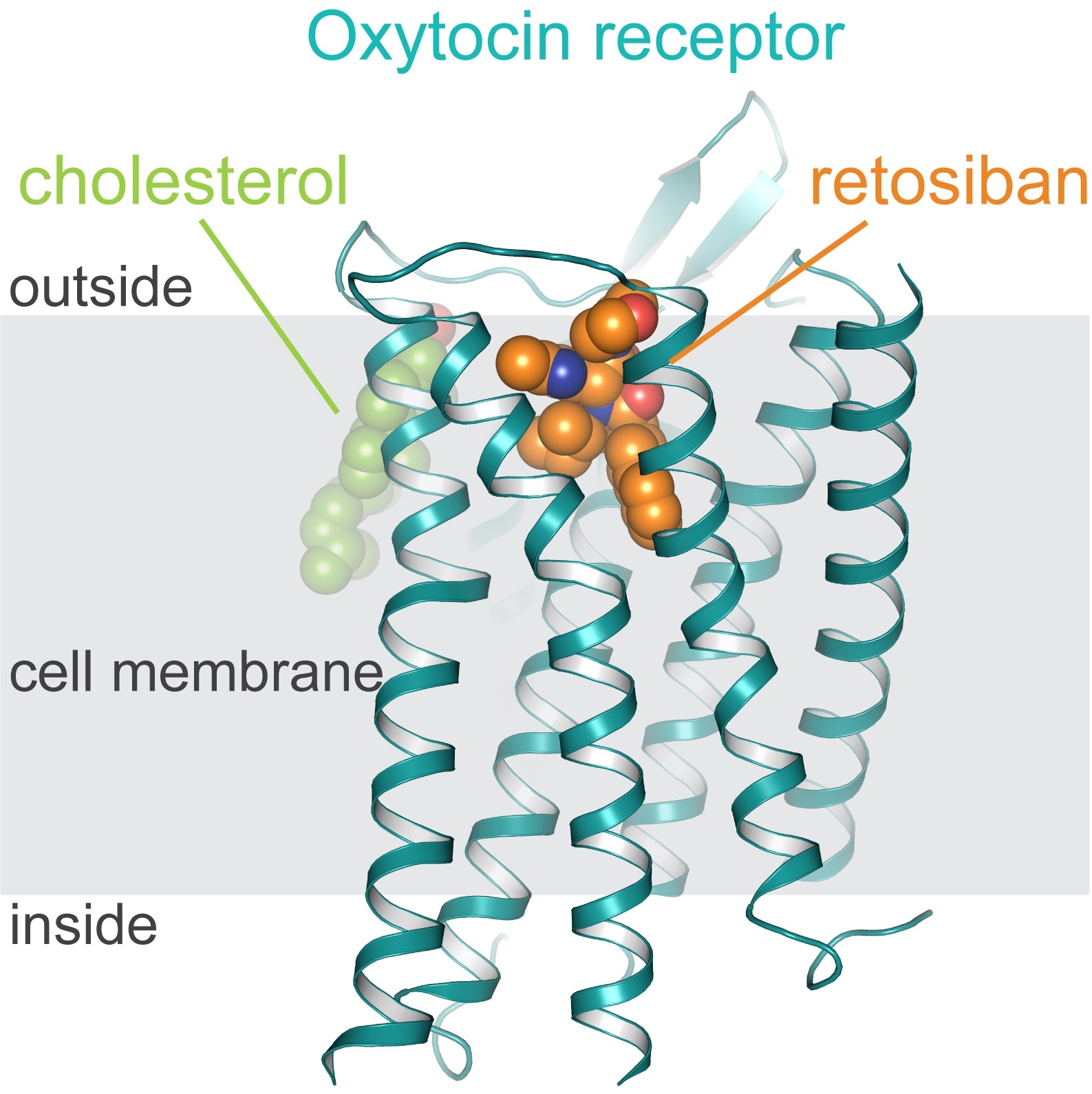Oxytocin is the so-called “cuddle hormone” or “love hormone” that plays a role in strengthening the relationship between the mother and child and controlling social bonding.

Structure of the oxytocin receptor in the cell membrane (grey), to which retosiban (orange) and cholesterol (green) are bound. Image Credit: Image: University of Zurich.
Oxytocin also plays a significant role in various mental health disorders, such as Asperger’s syndrome, autism, addiction vulnerability, or social anxiety. The hormone also initiates labor—the process of birth—and is implicated in several aspects of sexual reproduction and even in associated disorders.
The hormone binds to the oxytocin receptor to exert all these effects. Therefore, substances targeting the oxytocin receptor have excellent therapeutic potential for a wide range of diseases.
New drugs are difficult to develop
Ever since oxytocin was discovered almost three decades ago, scientists have attempted to create drugs that adhere specifically to the oxytocin receptor. But it proved to be rather difficult to perform such experiments. Apart from the oxytocin hormone itself, hardly any oxytocin receptor-targeting drug has been approved for clinical application.
Now, a research team, headed by Andreas Plückthun, professor at the Department of Biochemistry of the University of Zurich, has established the comprehensive three-dimensional (3D) structure of the oxytocin receptor adhered to the drug candidate called retosiban. This drug candidate was created to suppress preterm labor.
The elucidation of the oxytocin receptor's structure was an extremely challenging undertaking, which only succeeded thanks to a combination of directed evolution and protein engineering methods we developed over the last few years.”
Andreas Plückthun, Professor, Department of Biochemistry, University of Zurich
Plückthun added, “Understanding the exact three-dimensional interaction of retosiban and the oxytocin receptor at the atomic level serves as the blueprint for developing new therapeutics that regulates the receptors functioning.”
Improved understanding of receptor mechanism
The researchers also made another discovery.
To allow efficient propagation of oxytocin-induced signaling, the oxytocin receptor has to interact with two additional substances—cholesterol and magnesium.”
Yann Waltenspühl, Study First Author and PhD Candidate, University of Zurich
Establishing the accurate receptor shape allowed the scientists to identify the interaction areas for these two substances.
“The identification of these previously unknown regions fundamentally improves the understanding of the receptor mechanism,” added Waltenspühl.
Boosting the development of new therapeutics for other diseases
The latest results may also be directly relevant to the very closely associated vasopressin receptors. The vasopressin hormone regulates the blood pressure and the water content of body fluids, and therefore, its receptors are seen as drug targets for treating several diseases—right from heart failure to kidney disease. Moreover, the vasopressin receptors—similar to the oxytocin receptor—are known to contribute to autism spectrum disorders.
“Our work could thus boost the development of new drugs for a very broad range of widespread and severe human diseases,” Andreas Plückthun concluded.
Source:
Journal reference:
Waltenspühl, Y., et al. (2020) Crystal structure of the human oxytocin receptor. Science Advances. doi.org/10.1126/sciadv.abb5419.